| Address: | 115 North Witte Street | Country: | Le Flore |
| Started: | Completed: | 1936 | |
| Agencies: | Treasury Department Section of Fine Arts | NRHP: |
Current Usage
Post Office
Description
The Poteau post office is a single-story government building with a flat roof and basement. It was designed in the Art Deco style and has a mixture of limestone and brick cladding. Most of the limestone is used to enhance windows or the main entrance area, where it surrounds the door and flanking windows. Three courses of increasingly wider bands of limestone encircle the building at the top of the walls, at the base of what would be the entablature, and at the base of the first level. Low-relief and stylized engravings decorate the limestone wall space above the windows. An addition has been added to the northwest end of the building, with a strong effort to match the brick and style of the original building.
In 1940, Joan Cunningham designed and painted the mural that still decorates the interior northeast wall. That mural, Cotton, has suffered from what appears to be water damage. The mural is streaked, particularly along the top, and is peeling away from the wall on the bottom right. Still, the mural and post office warrant further study because of their association with New Deal art.
Cotton
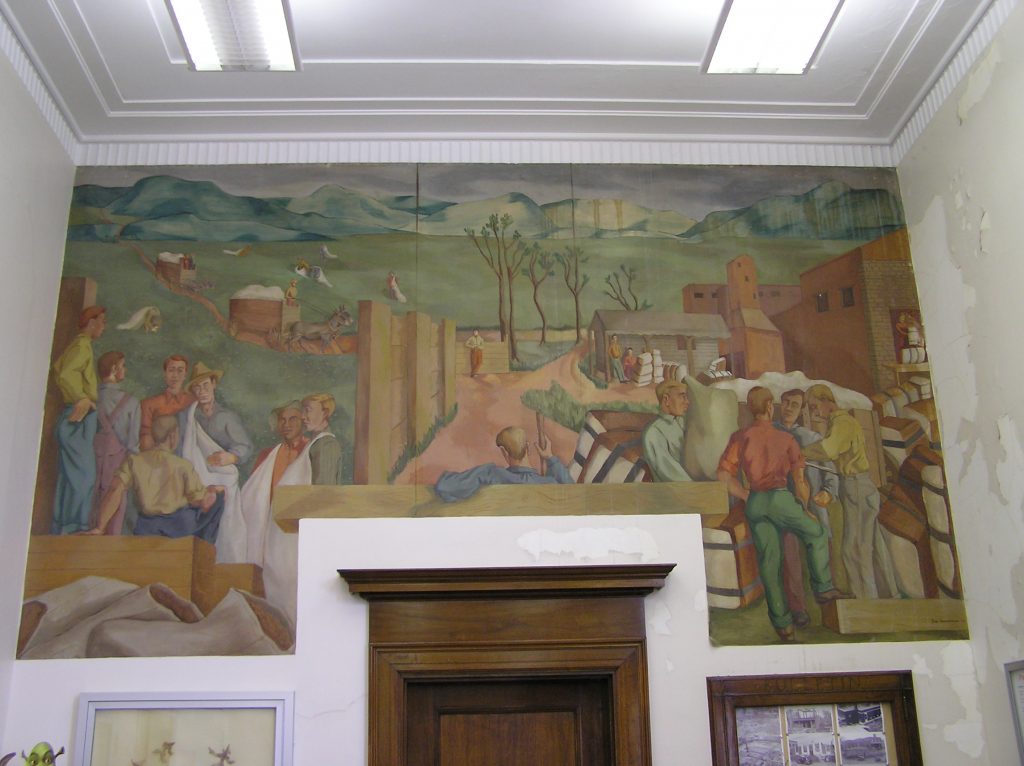
by Joan Cunningham, 1940, oil on canvas.
Cunningham won the commission for the Poteau mural in September 1938, but did not complete and install the mural until 1940. Cotton seems to depict the Depression era cotton industry, given the dress of the figures and the seeming modernity of the surrounding structures, although the region around Poteau had produced cotton for decades under Creek and then American farmers. The artist surveys the various aspects of cotton harvesting and production. Against the background of the Winding Stair Mountains, pickers fill their long bags with the crop, which is then loaded onto mule-driven wagons that carry it for bundling and processing at the facility at right. Several workers congregate in the foreground at left and right and engage in congenial banter. Cunningham’s vision of the cotton industry seems to be largely optimistic, but the somber coloration of the mural, the subtle distortion of human forms, and the exaggerated perspective creates an unsettling image.6 The architecture of the industrial plant creates a vaguely surreal quality, particularly in the unnaturally steep angle of the wall. A lone worker projects his elbow illusionistically into the viewer’s space, adding another unusual element to the composition. A few sparse trees provide the only growth in a seemingly denuded landscape. These elements might suggest the influence of Surrealism, which had gained in popularity in the United States in the late 1930s, but the influence is more likely that of the renaissance artist Piero della Francesca, whose perspectival compositions enjoyed popularity among American artists of the 1940s. Despite the disconcerting effect of the mural, it contains none of the more disturbing social issues confronting the cotton industry throughout the 1930s. The conflicts between underpaid labor and the increasingly powerful corporate farms, detailed most notably in John Steinbeck’s The Grapes of Wrath, are not pictured in Cunningham’s mural. Like most Section murals, Cunningham avoided direct social commentary or controversial subject matter in favor of a celebration of American work and industry.
Sources
- Thematic Survey of New Deal Era Public Art in Oklahoma 2003-2004, Project Number: 03-401 (Department of Geography, Oklahoma State University)
- Nicholas A. Calcagno, New Deal Murals in Oklahoma (Miami, Oklahoma: Pioneer Printing, Inc., 1976),
- Calcagno reports that Poteau residents felt the mural was an uncomfortable reminder of the Depression, and suggests that a petition may have been circulated to remove the mural.
- The Living New Deal
- Park and Markowitz, Democratic Vistas, Post Offices and Public Art in the New Deal, 1984.
- https://www.artprice.com/artist/205240/joan-cunningham/biography
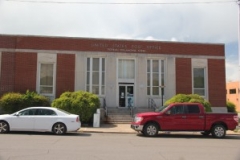
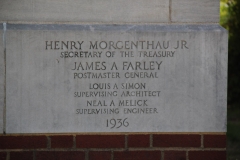
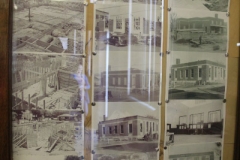
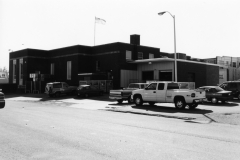
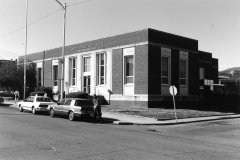
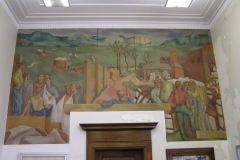
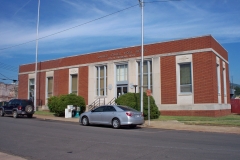



Recent Comments